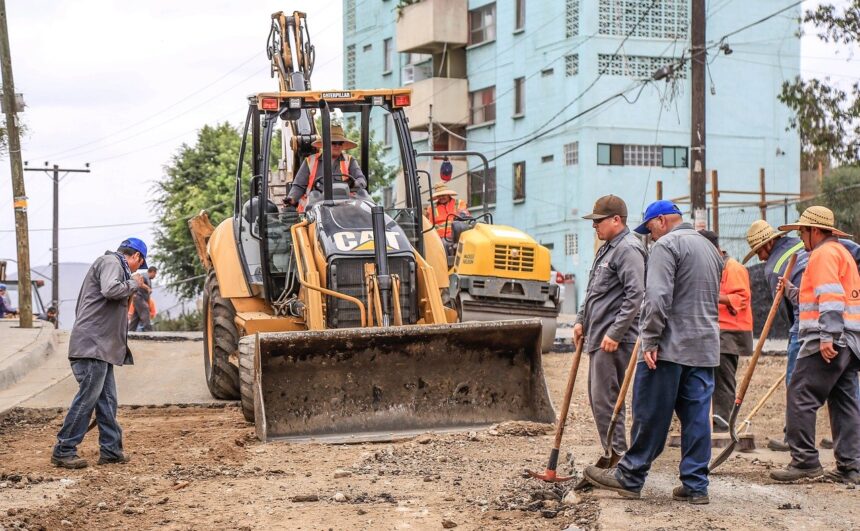Working on a remote construction site comes with its own set of challenges. Unlike urban projects where resources, materials, and skilled labour are readily available, remote sites require careful planning and coordination to ensure everything runs smoothly. Limited access to supplies, communication hurdles, and unpredictable weather conditions can all impact progress. Builders who develop effective strategies for managing these sites can keep projects on track and avoid costly delays.
Leveraging Technology for Better Project Management
One of the biggest obstacles in remote construction is maintaining efficiency despite the distance. Builders need a reliable system to track costs, schedule tasks, and communicate with teams working on-site.
Using estimating software for builders helps streamline the budgeting process, ensuring that material costs, labour expenses, and transportation fees are accurately calculated before work begins. Having a clear financial overview allows project managers to anticipate potential overruns and adjust spending as needed, which is crucial when working in locations where resupplying materials can be expensive and time-consuming.
Planning Ahead to Overcome Logistics Challenges
Getting materials and equipment to a remote site is often more complicated than in urban areas. Poor road conditions, long travel times, and limited local suppliers mean that every delivery needs to be carefully planned.
1. Sourcing Materials in Advance
To avoid project delays, it’s best to:
- Order materials in bulk to reduce the number of deliveries
- Work with suppliers who have experience handling remote projects
- Identify backup suppliers in case of unexpected shortages
Stockpiling essential items on-site can also help prevent disruptions caused by delayed shipments.
2. Coordinating Transportation Efficiently
Hauling materials and equipment to remote locations requires careful scheduling. Builders should:
- Use route planning tools to find the most efficient delivery paths
- Arrange for secure storage areas to prevent theft or weather damage
- Schedule deliveries during off-peak hours to minimise delays
Ensuring that machinery and tools arrive when needed helps keep projects moving forward without unnecessary downtime.
Maintaining Strong Communication with On-Site Teams
Staying connected with workers on a remote site is crucial for monitoring progress and addressing issues before they escalate. However, poor network coverage or unreliable internet access can make communication difficult.
1. Using Digital Communication Tools
Builders can improve remote site communication by:
- Implementing project management software that allows teams to share updates in real-time
- Using satellite phones or two-way radios in areas with poor mobile reception
- Holding regular video check-ins to discuss progress and potential roadblocks
Providing workers with clear channels for reporting problems ensures that delays and safety concerns are addressed quickly.
2. Assigning a Strong On-Site Manager
Having a skilled and experienced site manager on location can make a huge difference. This person serves as the primary point of contact between the remote team and off-site decision-makers, ensuring that instructions are followed and issues are handled promptly.
Managing Labour and Workforce Logistics
Finding and retaining skilled workers for remote projects can be challenging. Some workers may be hesitant to take on jobs that require extended time away from home, while others may struggle with the working conditions.
1. Providing Comfortable On-Site Living Arrangements
If workers need to stay on location, providing proper accommodation is essential. Temporary housing should offer:
- Adequate sleeping quarters
- Reliable access to food and clean water
- Proper sanitation and recreational spaces
Taking care of workers’ well-being can lead to higher productivity and better job satisfaction.
2. Rotating Work Crews to Reduce Burnout
Long hours in remote locations can lead to exhaustion and decreased performance. Implementing a shift rotation system allows workers to take breaks and return refreshed, improving overall efficiency.
Monitoring Progress and Keeping Projects on Track
Since remote sites are harder to visit frequently, builders must have a system in place to track progress without being physically present.
1. Using Drones for Site Inspections
Drones can capture real-time images and videos of the worksite, allowing project managers to monitor developments without needing to travel. They are particularly useful for:
- Assessing construction progress
- Identifying safety hazards
- Documenting work for client updates and regulatory compliance
2. Setting Clear Milestones and Deadlines
With limited access to on-site teams, having well-defined project milestones ensures that tasks are completed on schedule. Regular progress reports help builders identify potential delays early and make necessary adjustments.
Ensuring Safety and Compliance
Working in remote locations can increase risks related to worker safety, equipment failures, and environmental factors.
1. Providing Proper Safety Training
Since emergency services may not be readily available, workers should receive training in:
- First aid and emergency response procedures
- Operating heavy machinery in rough terrain
- Identifying and managing weather-related risks
2. Keeping Safety Equipment Readily Available
Every remote site should be stocked with:
- Emergency medical kits
- Fire extinguishers and spill containment supplies
- Personal protective equipment (PPE) for all workers
Having the right safety measures in place can prevent accidents and ensure compliance with industry regulations.
Conclusion
Managing remote construction sites requires a combination of strategic planning, strong communication, and the right technology. Builders who invest in estimating software for builders can better control costs, allocate resources efficiently, and anticipate challenges before they become major setbacks.
By focusing on logistics, workforce management, and site safety, construction teams can overcome the difficulties of working in remote locations and successfully complete projects on time and within budget.


